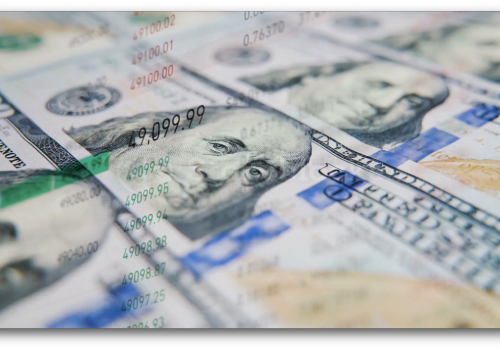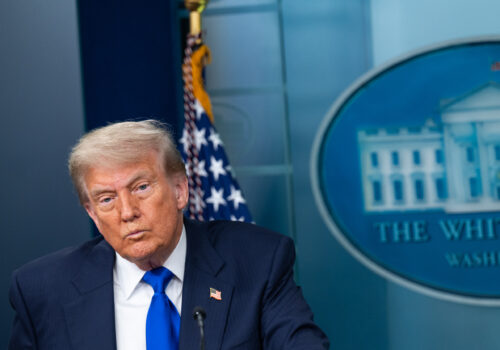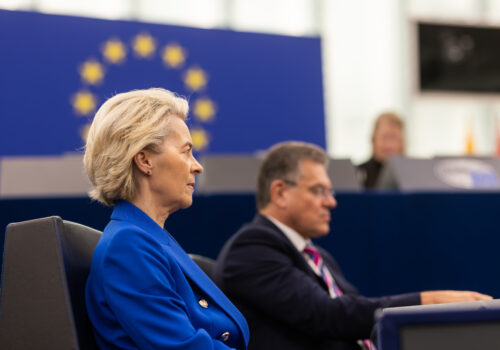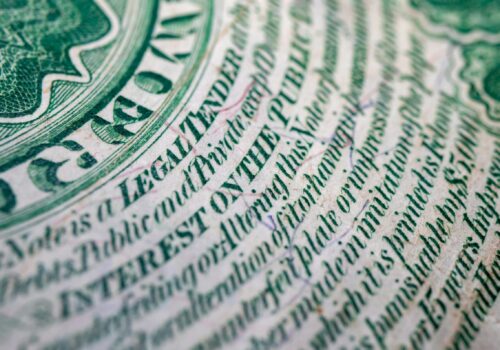An Independence Day warning about the US dollar
On this Fourth of July, with the Stars and Stripes waving proudly across our great nation, spare a moment of concern for that other iconic symbol of American influence and power: the US dollar.
That’s not because the US currency is about to collapse or be dethroned. Quite the contrary. However, it is being diminished in ways that are both cumulative and new, and in a manner that should concern every American patriot.
Not since ‘73
For more than eighty years, the US dollar has been the cornerstone of global finance. It’s been an anchor of global economic stability, a vehicle for American influence, and, frequently, a weapon to achieve foreign policy goals. It has served as the world’s primary reserve currency since World War II and the Bretton Woods Agreement in 1944, when other currencies pegged themselves to the dollar and the dollar pegged itself to gold.
For decades, the world chose the dollar without thinking about it all that much, and that was not only because of unrivaled American economic strength. Most of the world’s major economic players also trusted the United States’ financial leadership—its rule of law, its institutions, its predictability.
Nothing will replace the greenback soon, but its erosion is an increasing topic of conversation among global investors. This is reflected in markets. A Financial Times front-page headline this week, across five columns, screamed: “Dollar’s worst showing since 1973 after Trump agenda forces investor rethink.”
Trump administration officials pooh-pooh all that as partisan claptrap, even after the Senate this week passed its mega budget bill that the Congressional Budget Office estimates will add more than $3 trillion to the United States’ $36 trillion debt. They argue that the dollar’s decline is cyclical, that the US stock market keeps hitting records, and that the economy will boom after the bill also passes the House—and as the administration reaches a string of trade agreements currently being negotiated.
By way of counterpoint, the Financial Times quoted Francesco Pesole, a foreign exchange strategist at ING, as saying that the dollar had become “the whipping boy of Trump 2.0’s erratic policies.” He added that the president’s stop-start tariff war, the United States’ vast borrowing needs, and worries over the independence of the Federal Reserve are undermining the appeal of the dollar as an investment haven.
Beyond tariffs
What makes this moment a potential inflection point, and thus worthy of this column, is that confidence in the dollar has become less automatic than it once was. Trust is the intangible but irreplaceable asset backing any currency.
At the spring International Monetary Fund-World Bank meetings, leading financial officials who spoke at the Atlantic Council publicly hadn’t changed their view that there wasn’t really anything good to replace the US currency. Speaking privately, however, many expressed an ever-growing desire to find alternatives. And that is what’s new.
The dollar has slumped more than 10 percent in 2025, which the Financial Times reported was the worst first half of the year since the end of the gold-backed Bretton Woods system in the early 1970s. At the same time, the euro has risen 13 percent, to more than $1.17, as investors increase their demand for assets such as German bonds and worry about the impact of tariffs and the possibility of a US recession, though recession odds have declined.
As the dollar has been overvalued, some sell-off makes sense. However, this market response has gone beyond Trump tariff policies and speaks to broader angst about the dollar around world markets. Another sign of dollar doubts is that US Treasury markets have experienced significant volatility. What’s driving the swings, investors say, is concern about rising US debt levels, inflation fears, the impact of US trade policies, and the potential for a recession. Thus far, the bond market has been shrugging off the potential implications of the budget bill.
Confidence building
It is always harder to regain confidence than it is to lose it. The US economy has so much built-in dynamism and underlying strength that those who have predicted the dollar’s demise over the years have inevitably been proven wrong.
At the recent NATO Summit in The Hague, US President Donald Trump showed that he had the power to shift European concerns about US security guarantees. He did this by recommitting Washington to them in the summit’s communiqué, which at the same time embraced a surge in European defense and defense related-spending to a target of 5 percent of gross domestic product over the next ten years—up from 2 percent. Yet concerns lingered in Europe even after the summit, given Trump’s perceived unpredictability and a decision earlier this year to cut off US weapons delivery and intelligence sharing with Ukraine for a period of ten days. Then this week, the Pentagon announced that it was pausing certain weapons deliveries to Ukraine, reportedly including air defense capabilities.
Regaining global confidence in US financial leadership may be even harder. Above all, it will require committing credibly to deficit reduction and fiscal discipline and reinforcing the Federal Reserve’s independence. It will also require reasserting the US role as a predictable anchor of the global financial system and avoiding the weaponization of the dollar in sanctions and trade disputes.
This isn’t a call to panic, but it is a warning. Even as Old Glory flies high this weekend, the dollar is showing concerning wear. History shows the consequences of inattention.
Frederick Kempe is president and chief executive officer of the Atlantic Council. You can follow him on X: @FredKempe.
This edition is part of Frederick Kempe’s Inflection Points newsletter, a column of dispatches from a world in transition. To receive this newsletter throughout the week, sign up here.
Further reading
Tue, Jul 1, 2025
What to expect as Trump’s tariff deadline looms
Fast Thinking By
What will the Trump administration do when the ninety-day pause on its “reciprocal” tariffs expires on July 9?
Thu, Jun 26, 2025
To retaliate, or not to retaliate, that is the question for the EU on Trump’s tariffs
New Atlanticist By Frances Burwell
Striking back at US tariffs is unlikely to help the EU achieve its goals of a more stable and open trading partnership with the United States.
Tue, May 20, 2025
Why the US cannot afford to lose dollar dominance
Atlantic Council Strategy Paper Series By Martin Mühleisen, Valbona Zeneli
Since World War II, US geopolitical influence has been compounded by the role of the dollar as the world’s dominant currency. As global economic power becomes more diffuse and strategic competitors “dedollarize,” policymakers must determine how to maintain the dollar’s role at the center of global trade and financial networks.
Image: A close-up image of a US Dollar bill, capturing the intricate details of its design, including the portrait of George Washington and the iconic symbols of American heritage. © Taidgh Barron/ZUMA Press Wire) REUTERS




